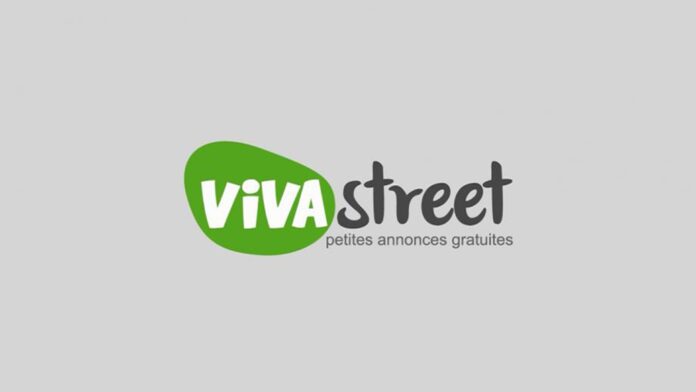Introduction to Viva Streets
Urban spaces are transforming cities around the world to embrace the concept of “Viva Streets.” This innovative initiative is designed to reclaim streets from vehicles and return them to people. Encouraging community engagement, healthier lifestyles, and environmental sustainability. Viva Streets is not just about closing roads to cars; it’s about creating vibrant public spaces where people can walk, cycle, play, and interact in a safe and welcoming environment.
What is Viva Streets?
Viva Streets is an urban initiative that temporarily transforms streets into pedestrian-friendly zones, free from motorized vehicles. The goal is to encourage active transportation, reduce traffic congestion, improve air quality, and promote social interaction within the community.
The concept originated from similar initiatives like Ciclovía in Bogotá, Colombia. Where entire streets are regularly closed to cars and opened to the public for cycling and walking. Viva Streets has since spread to cities around the globe. Adapting to local cultures and needs while maintaining the core principle of creating safer, more inclusive urban spaces.
The Benefits of Viva Streets
- Promotes Health and Wellness
One of the primary benefits of Viva Streets is the promotion of physical activity. This is particularly important in urban areas where opportunities for outdoor activities may be limited.
- Reduces Traffic Congestion and Pollution
By closing streets to motorized vehicles, Viva Streets helps reduce traffic congestion and lower pollution levels. This temporary reduction in traffic not only makes the streets safer for pedestrians and cyclists. But also contributes to improved air quality. In cities where air pollution is a significant concern. Viva Streets can serve as a powerful tool for raising awareness. About the environmental impact of car dependency and promoting alternative modes of transportation.
- Supports Local Businesses
Viva Streets events often attract large crowds, providing a boost to local businesses. Street vendors, cafes, and shops benefit from the increased foot traffic. As people explore the area on foot or by bike. This economic stimulus can be particularly valuable for small businesses, helping them gain visibility and attract new customers. Additionally, by creating a lively and attractive environment, Viva Streets can contribute to the revitalization of urban areas. Making them more appealing to residents and visitors alike.
- Promotes Sustainable Transportation
Viva Streets encourages the use of sustainable modes of transportation, such as walking, cycling, and public transit. Over time, Viva Streets can inspire more permanent changes in transportation behavior, leading to a reduction in car dependency and a shift towards more sustainable urban mobility.
Successful Implementations of Viva Streets
- Bogotá, Colombia – Ciclovía
The Ciclovía in Bogotá is one of the most successful and well-known examples of Viva Streets. Every Sunday and public holiday, over 120 kilometers of streets are closed to cars and opened to cyclists, runners, and walkers. The event attracts millions of participants and has become a beloved tradition in the city.
- New York City, USA – Summer Streets
In New York City, the Summer Streets program transforms nearly seven miles of streets into car-free zones on select Saturdays in August. The event features a wide range of activities, including fitness classes, art installations, and interactive workshops. Summer Streets aims to promote healthy living, environmental sustainability, and cultural engagement, offering residents and visitors a unique way to experience the city.
- Paris, France – Paris Respire
Paris Respire, or “Paris Breathes,” is an initiative that closes certain streets to cars on the first Sunday of each month. The program focuses on reducing air pollution and encouraging residents to explore the city by foot or bike.
- Mumbai, India – Equal Streets
Equal Streets in Mumbai is an initiative that promotes the equitable use of public spaces by closing roads to vehicles and opening them to people. The event features yoga sessions, fitness classes, art workshops, and cultural performances, creating a lively and inclusive environment. Equal Streets aims to raise awareness about the need for more pedestrian-friendly infrastructure and encourage the adoption of sustainable transportation options.
How to Implement Viva Streets in Your City
- Engage Stakeholders
Successful implementation of Viva Streets requires the involvement of various stakeholders, including local government, businesses, community organizations, and residents. It’s essential to build a coalition of support and address any concerns or objections.
- Plan the Route
Careful planning is required to select the streets that will be closed for the event. The chosen route should be accessible, safe, and have minimal impact on essential services like emergency response and public transit. It’s also important to consider the needs of local businesses and residents, ensuring that the event enhances rather than disrupts the community.
- Promote the Event
Effective promotion is key to attracting participants and ensuring the success of Viva Streets. Use a combination of traditional and digital marketing strategies to reach a broad audience. Social media, local news outlets, and community newsletters can all be valuable tools for spreading the word. Additionally, collaborating with local businesses and organizations can help generate excitement and encourage participation.
- Provide Activities and Amenities
To create a vibrant and engaging atmosphere, Viva Streets should offer a variety of activities and amenities. Consider including fitness classes, live music, art installations, food vendors, and educational workshops. Providing amenities like rest areas, water stations, and bike repair services can enhance the experience for participants and ensure their comfort and safety.
- Measure Impact
After the event, it’s important to evaluate its impact on the community. Collect data on participation, traffic patterns, air quality, and local business sales to assess the success of Viva Streets. This information can be used to make improvements for future events and demonstrate the value of the initiative to stakeholders.
Challenges and Solutions
- Traffic Disruption
One of the main challenges of Viva Streets is the temporary disruption of traffic. To minimize the impact, it’s essential to communicate the event details to the public well in advance and provide alternative routes for drivers. Collaborating with local transportation authorities can help ensure that public transit services are not adversely affected.
- Accessibility Concerns
Ensuring that Viva Streets is accessible to everyone, including people with disabilities, is crucial. This can be achieved by providing accessible routes, offering assistance services, and ensuring that all activities are inclusive. Engaging with disability advocacy groups during the planning process can help address any potential accessibility issues.
- Weather Dependence
Outdoor events like Viva Streets are often dependent on weather conditions. To mitigate the risk of bad weather, consider having a backup plan in place, such as rescheduling the event or moving certain activities to indoor locations. Clear communication with participants about weather-related changes is also essential.
The Future of Viva Streets
As cities continue to grow and face challenges like traffic congestion, air pollution, and social isolation, initiatives like Viva Streets will become increasingly important. By reimagining urban spaces and prioritizing people over cars, Viva Streets offers a vision of a healthier, more connected, and sustainable future.
The success of Viva Streets in various cities around the world demonstrates the potential for this initiative to create lasting positive change. As more communities embrace the concept, we can expect to see a shift towards more pedestrian-friendly cities, where streets are not just for cars but for people to enjoy, explore, and connect.

Conclusion
Viva Streets is more than just an event; it’s a movement that seeks to transform urban spaces and improve the quality of life for residents. By promoting health and wellness, enhancing community engagement, reducing traffic congestion, and supporting local businesses, Viva Streets offers a multitude of benefits. Whether you’re a city planner, a business owner, or a community member, getting involved in Viva Streets can contribute to creating a more livable and vibrant city.
With careful planning, stakeholder engagement, and a commitment to sustainability, Viva Streets can become a regular and cherished part of urban life, inspiring positive change and fostering a sense of community. As cities continue to evolve, initiatives like Viva Streets will play a crucial role in shaping the future of urban living, ensuring that our streets are places for people, not just cars.


